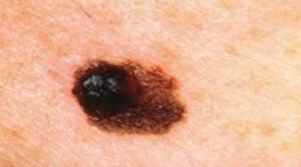A nurse is caring for a client who has malignant melanoma. Which of the following findings should the nurse expect when assessing the lesion?
Pain
Pruritus
Purplish in color
Purulent drainage
The Correct Answer is C
Malignant melanoma is a rare but aggressive type of skin cancer that originates from melanocytes, the cells that produce pigment in the skin. It can appear as a new or changing mole that has an irregular shape, uneven color, large size, or bleeding tendency. It may also be purplish in color due to vascular invasion or hemorrhage within the lesion.

Nursing Test Bank
Naxlex Comprehensive Predictor Exams
Related Questions
Correct Answer is D
Explanation
This is because immunosuppression increases the risk of infection, and health care workers can be potential sources of pathogens. The nurse should use standard precautions, avoid invasive procedures, and restrict visitors who are ill.
Correct Answer is B
Explanation
This is because Western blot analysis detects specific antibodies to HIV antigens and has a high specificity and sensitivity for HIV infection. CD4+ T-cell count measures the number of helper T cells in the blood and indicates the degree of immunosuppression in clients with HIV infection, but it does not confirm the diagnosis. Quantitative RNA assay and viral load test measure the amount of HIV RNA in the blood and indicate the level of viral replication and response to antiretroviral therapy, but they do not confirm the diagnosis.
Whether you are a student looking to ace your exams or a practicing nurse seeking to enhance your expertise , our nursing education contents will empower you with the confidence and competence to make a difference in the lives of patients and become a respected leader in the healthcare field.
Visit Naxlex, invest in your future and unlock endless possibilities with our unparalleled nursing education contents today
Report Wrong Answer on the Current Question
Do you disagree with the answer? If yes, what is your expected answer? Explain.
Kindly be descriptive with the issue you are facing.
